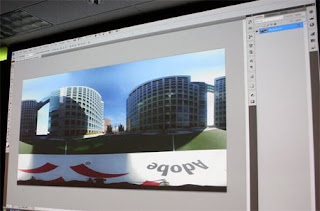
We have been saying it for a while now, mainstream applications need GPU acceleration to ring in the next major evolutionary step in software development. Far too long we have been stuck in a cycle of programming that relies on increasing clock-speeds, brings acceleration with new CPUs and a slow-down with new software releases. Even if Photoshop supports multi-core CPUs, it is one of those applications that always are very time intensive to use and especially if you are a professional user and work with huge images, then you are very familiar with “The Great Wait”, which typically describes the time lost when opening a big file or when applying a filter.
But there appears to be a very effective solution on the horizon, a solution that is most likely more effective than anything else we have seen before and in our experience using Photoshop over the past 14 years. During a demonstration at Nvidia’s headquarters in Santa Clara, we got a glimpse of Adobe’s "Creative Suite Next" (or CS4), code-named “Stonehenge”, which adds GPU and physics support to its existing multi-core support.
So, what can you do with general-purpose GPU (GPGPU) acceleration in Photoshop? We saw the presenter playing with a 2 GB, 442 megapixel image like it was a 5 megapixel image on an 8-core Skulltrail system. Changes made through image zoom and through a new rotate canvas tool were applied almost instantly. Another impressive feature was the import of a 3D model into Photoshop, adding text and paint on a 3D surface and having that surface directly rendered with the 3D models' reflection map.
There was also a quick demo of a Photoshop 3D accelerated panorama, which is one of the most time-consuming tasks within Photoshop these days. The usability provided through the acceleration capabilities is enormous and we are sure that digital artists will appreciate the ability to work inside a spherical image and fix any artifacts on-the-fly.
According to information we were given, all of these new features are part of the next-gen Photoshop, which should be a part of the “CS Next” suite. The package is expected to be released on October 1.